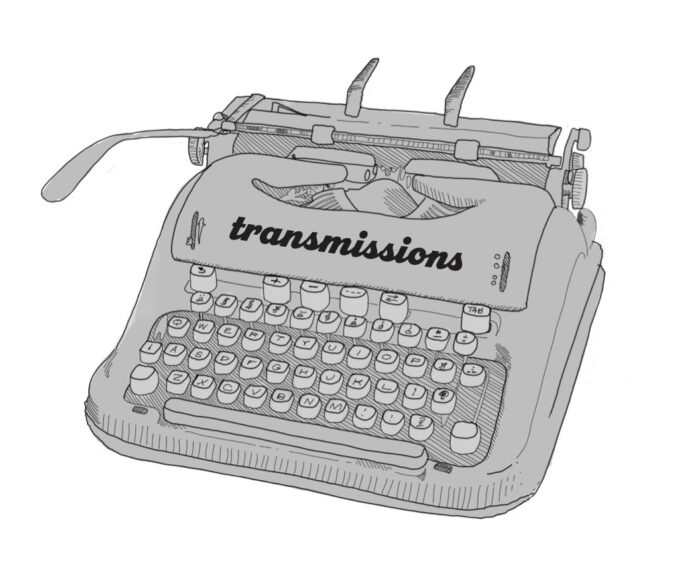Recently, while in the throes of nostalgia, I went through a pair of filing boxes I have containing decades of old snapshots. Deep within the cardboard recesses, I saw photos of the unhappy child I once was, the teenager who buried themselves so deeply in the closet that their return address was in Narnia, and — at last — the scared young trans woman, making her first timid steps out into the larger world.
There were faded images from that first transgender conference I attended, and the first photo shoot I’d sat for at a professional studio in Southern California. At the time, I was less than two years into self-acceptance of my trans self, but really wasn’t entirely sure what that was going to even mean.
I came across pictures from my earliest bouts with transgender activism. Friends from my America Online days, as we tried to change their rules and set up the Transgender Community Forum. Visits to Houston, Texas for the Sixth International Conference on Transgender Law and Employment Policy. I saw myself grow into, well, me. Or at least an earlier version of me.
One thing I learned in those early years of self-discovery was that you don’t necessarily know what being transgender will mean for you. I recall that when I first came out, I only knew I was trans something. I didn’t have all the words for how I felt, and I knew it. I did not have the lived experience, and really did not feel I knew enough to be sure.
And yes, I knew how I’d felt as a kid, feeling out of place as I was perpetually told I was a boy, knowing that that fit on me as well as the overly-large USC jersey my mother bought me in my late tween years. Like it, there were a great many narratives that had been created about my life ahead, and a lot of expectations that had been built for me by my parents, friends, and family.
I also knew who I was in high school, trying so desperately to fight any such feelings and fit in exactly where everyone thought I should be. I had learned to feel deep shame about who I was, and I was willing to try just about anything to kill those feelings in myself. Or maybe just kill myself and let those feelings follow. None of that, of course, worked.
It took me a couple years from when I first came out before I reached a point of knowing that I was indeed going to transition. I took a name — the one I wear to this day — and began to come out in earnest, planning for the life I have now.
One of the more important things I also learned in those early days, as I sought out and spoke to other transgender people, is that none of us are on the same journey. We may share common experiences, but it’s never 100% the same. We approach our transitions from different sides, like the parable of the blind men and the elephant, feeling around in the darkness for our truth,
It is highly unformed, obviously, for us to come from the exact same backgrounds. Transgender people exist among all races and cultures, and within all social strata. Our experiences are remarkably unique, shaped by our experiences and our background.
Our transitions are rarely this perfectly linear, Hollywood-style tale. You might be led to believe that we all learn about ourselves being trans at an early age, we work towards transition, and we move into our happily-ever-afters. The reality is much different.
This new year marks thirty years since I first started to discover the path I am on now, the path I will be on at least until I finally transcend this earthly form. It’s a path that has meandered, allowing me time to understand myself more as I go.
Some of us, like me, may spend a lot of time trying to deny our trans selves in one form or another. Many trans women, for example, spend a large part of our lives trying to be as “manly’ as possible, taking on high risk jobs or joining the military and such. We’re most likely trying to push ourselves into being that masculine creature we’re all told we should be, with many more than a dash of self-harm in the mix.
Some of us, too, may dip our toes into transition, only to find the road is simply too hard, or circumstances don’t really allow transitioning right then, or even that perhaps transition isn’t the right step to take at all. Some of us might detransition, and many of us may also retransition later on.
Some of us, too, may try on a number of identities, shifting as we wish as we seek to find what will work best for us. We may transition, then transition again to a more nonbinary or gender fluid state, — or vice versa.
All of these things make up this wonderful, diverse thing that is the transgender community, and all of us should feel welcome to find their place. There simply Is no “one size fits all” for being trans, and we, as a community, simply have to respect that about each other. We are all finding our place, and we are all discovering deeper truths about ourselves as we go along.
Frankly, that is how it should be: transition isn’t a destination, it’s a passage.
Gwen Smith knows that her teen self would freak out to see her now. You’ll find her at www.gwensmith.com/.
